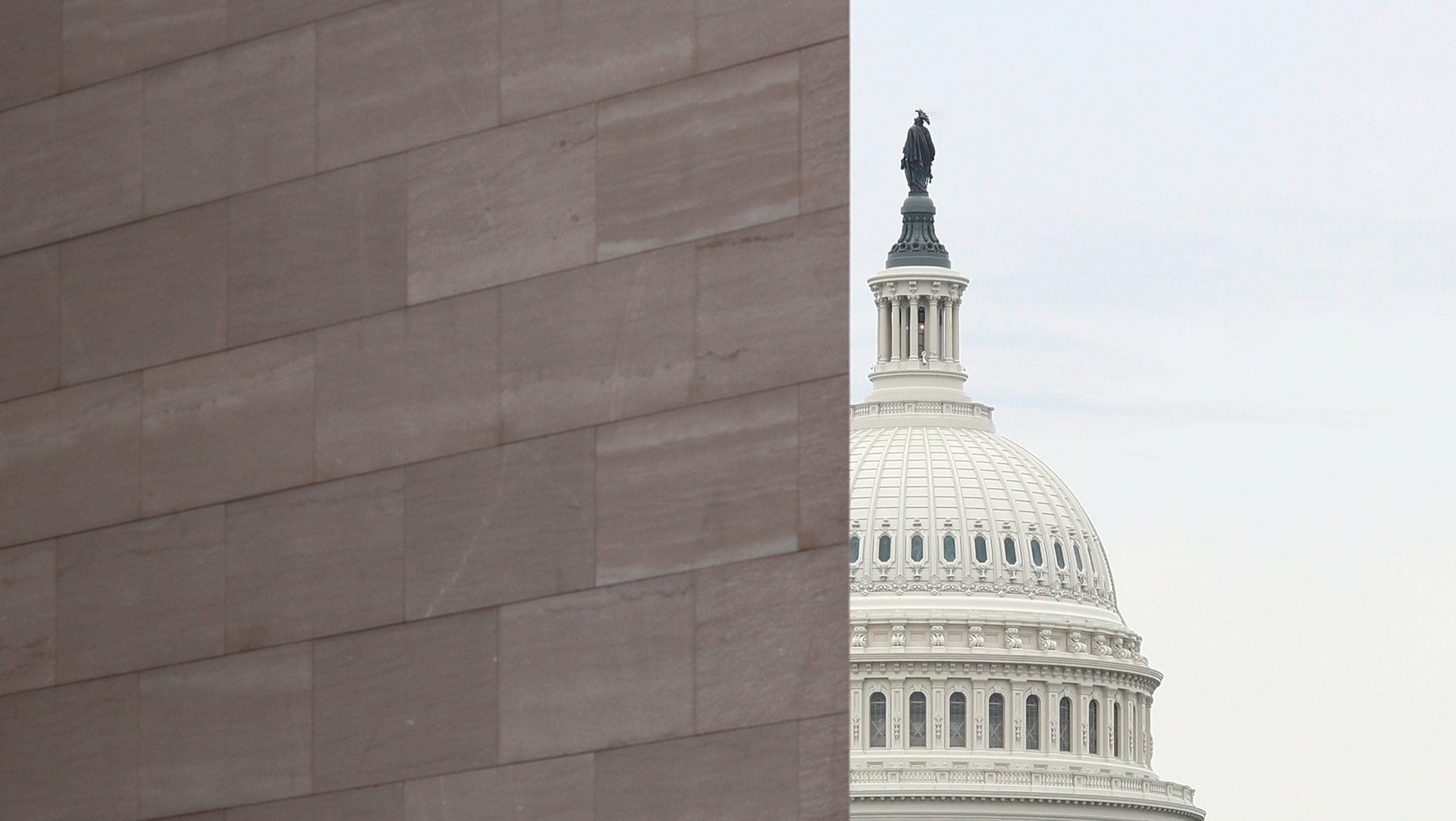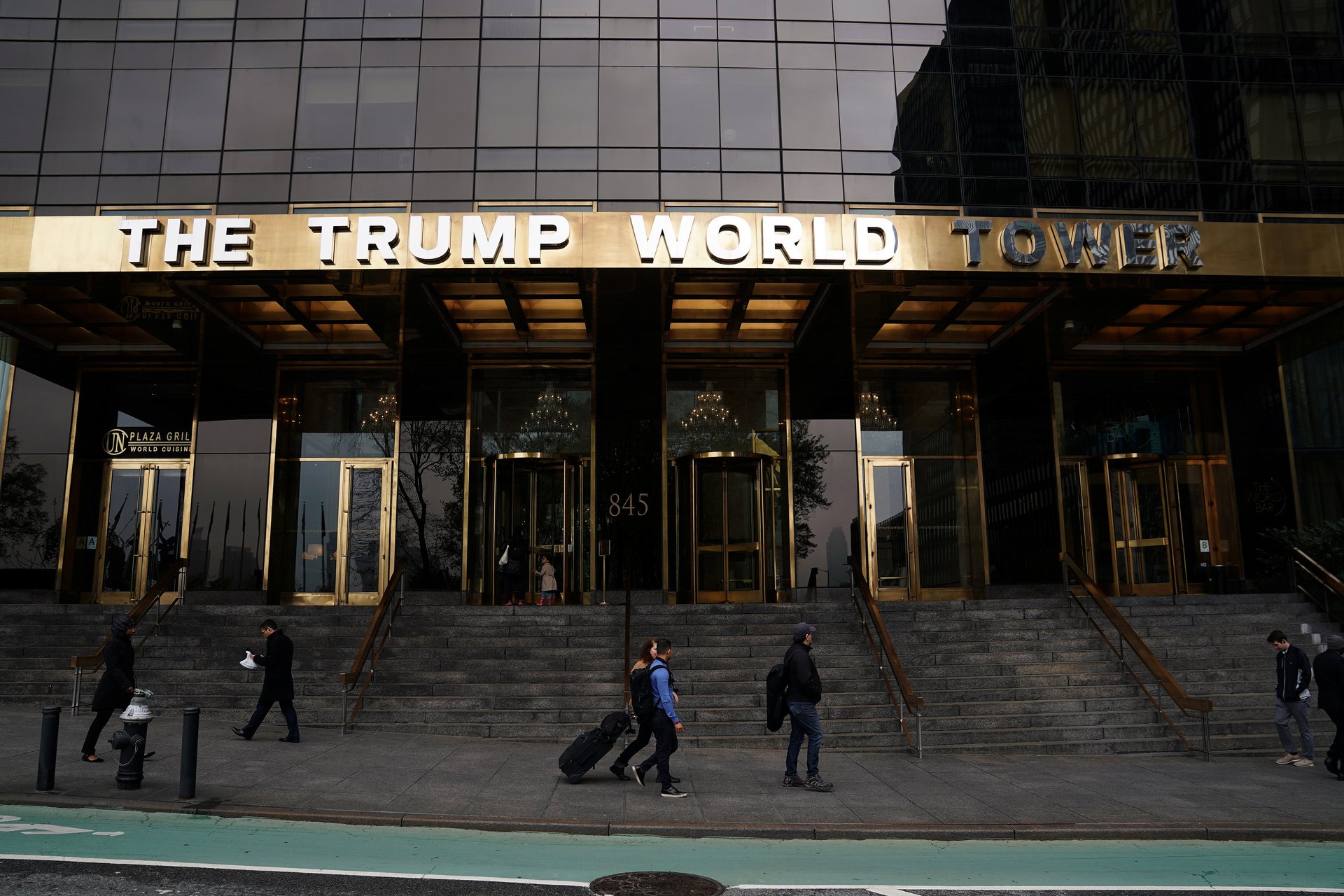Trump’s last gasp of authoritarianism tries to make US federal buildings classically “beautiful”
US president Donald Trump waited until his final full month in office to make a new rule dictating the look of federal buildings. Trump’s 203rd executive order, titled “Promoting Beautiful Federal Civic Architecture,” seeks to establish “traditional architecture,” exemplified in Greek and Roman antiquity, as America’s official architectural brand. Backed by the National Civic Arts Society, a Washington-based group that promotes classical arts and architecture, the law is a rebuke of modernism.


US president Donald Trump waited until his final full month in office to make a new rule dictating the look of federal buildings. Trump’s 203rd executive order, titled “Promoting Beautiful Federal Civic Architecture,” seeks to establish “traditional architecture,” exemplified in Greek and Roman antiquity, as America’s official architectural brand. Backed by the National Civic Arts Society, a Washington-based group that promotes classical arts and architecture, the law is a rebuke of modernism.
Listed in the executive order are preferred building styles like Neoclassical, Georgian, Beaux-Arts, Art Deco, Gothic, Romanesque, Pueblo Revival, and Spanish Colonial. Any designs that deviate will have to go through additional hurdles to get approved. A newly-established council, chaired by a member of the Commission of Fine Arts, will have oversight over the matter. With two women on the commission finishing their term this year, the panel will be comprised of seven men.
Writer Deane Madsen, who runs the blog BrutalistDC, is among the many voices in architecture circles appalled by Trump’s mandate. “I take this pretty personally,” he tells Quartz. (Brutalist architecture was specifically called out by the executive order as not conforming to the new rules.) “While I’m aware that loving Brutalist buildings seems to be an unpopular position, it should be clear that attempting to exert control over architectural style is less about reducing the emergence of unpopular architecture than it is about a political power-grab over aesthetics.”
Brutalist buildings, the order notes, “grew out of the early 20th-century modernist movement that is characterized by a massive and block-like appearance with a rigid geometric style and large-scale use of exposed poured concrete.” The Hubert H. Humphrey Department of Health and Human Services Building and the Robert C. Weaver Department of Housing and Urban Development Building (HUD), both designed by the celebrated modernist architect Marcel Breuer, are exemplars of Brutalist architecture. The HUD office, Madsen points, is “the first federal building to be constructed of precast concrete, and is emblematic of the Design Excellence outlined in the last major governmental statement on architecture.”
Beyond architectural taste, critics of the executive order lament that prescribing specific architectural styles is anti-democratic. The kind of architectural uniformity the order envisions typically is more feasible in authoritarian regimes or monarchies. (Trump’s mandate recalls Chinese president Xi Jinping’s directive against “weird architecture.”)
Jeff Speck, former design director at the National Endowment for the Arts, is outraged by what he sees as collusion in shaping the executive order. In an open letter posted on Twitter, he castigated the National Civic Arts Society’s leadership for politicizing architecture styles.”By ghost-writing an executive order to make classicism the default style for federal architecture, you and your organization have shown that your goal is no longer diversity but domination,” Speck wrote. “If this week’s victory gives you any sense of comfort, I’m sorry to tell you it’s temporary relief for someone who just shat the pool.”
Beyond the politics of style, requiring architects to recreate historical pastiches derails innovation, adds Madsen. “I believe that some of our best buildings have come from innovative use of materials beyond white marble.”
Ugly condos and beautiful cities
“Beautiful,” Trump’s favorite adjective, appears throughout the prose of the executive order.
It contends that prioritizing beauty in public buildings will “inspire the American people and encourage civic virtue.” This premise is a vestige from the City Beautiful Movement of the 1890s, when the middle class believed that erecting European style Beaux Arts monuments would lift the spirits of poor tenement dwellers and somehow inspire them to be more virtuous.
It’s with some irony that Trump’s garish, 72-floor Trump World Tower condominium in midtown Manhattan once led New York City’s lead planner to appeal for beauty, says architecture critic Karrie Jacobs. In a 2012 lecture at the School of Visual Arts, she notes that Joseph Rose, who chaired the planning commission under former New York City mayor Rudy Giuliani, rallied to “instill the quest for beauty into the powerful economic drive of this city’s real-estate entrepreneurs.” It was an usual appeal because American city planners tended to steer clear from word “beauty” when the City Beautiful Movement eventually fell out of favor in the early 1900s. “Aesthetic cohesion was never our strong suit in the United States,” Jacobs said.

“Promoting Beautiful Federal Civic Architecture,” Jacobs observes, is the architectural expression of Trump’s rallying philosophy. “It’s a retrograde version of “Making America Beautiful,” she said, noting the president’s fixation with a 1950s version of America. “I’m a sucker for domes, but the assumption of this executive order is that there’s only one kind of architectural beauty and that is beauty from the past,” Jacobs explains. “That’s very presumptuous. My interest in the word ‘beauty’ is that it’s impossible to have any agreement on what it is—and that makes it really interesting.”